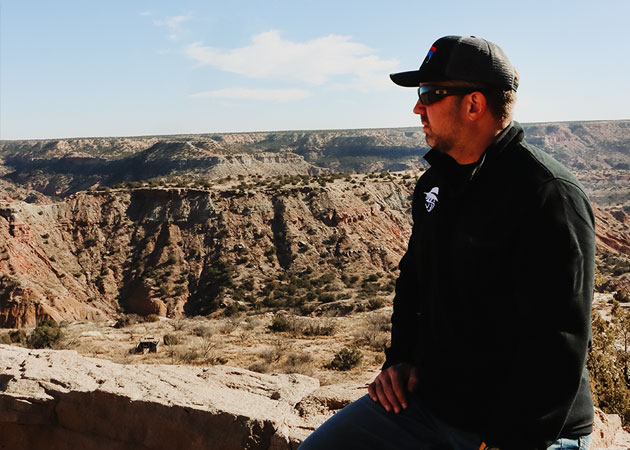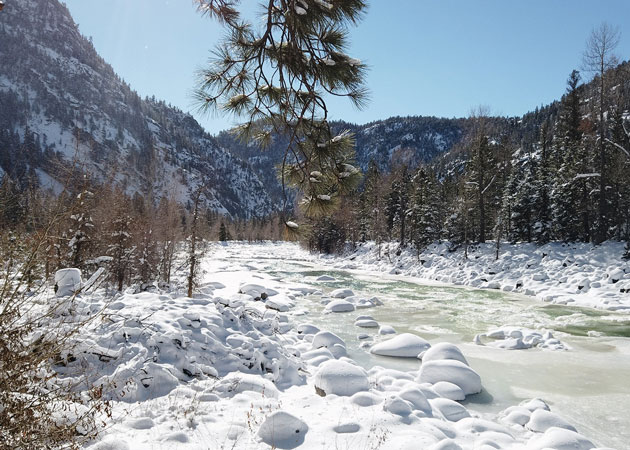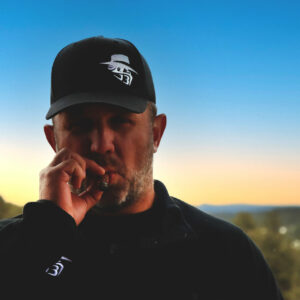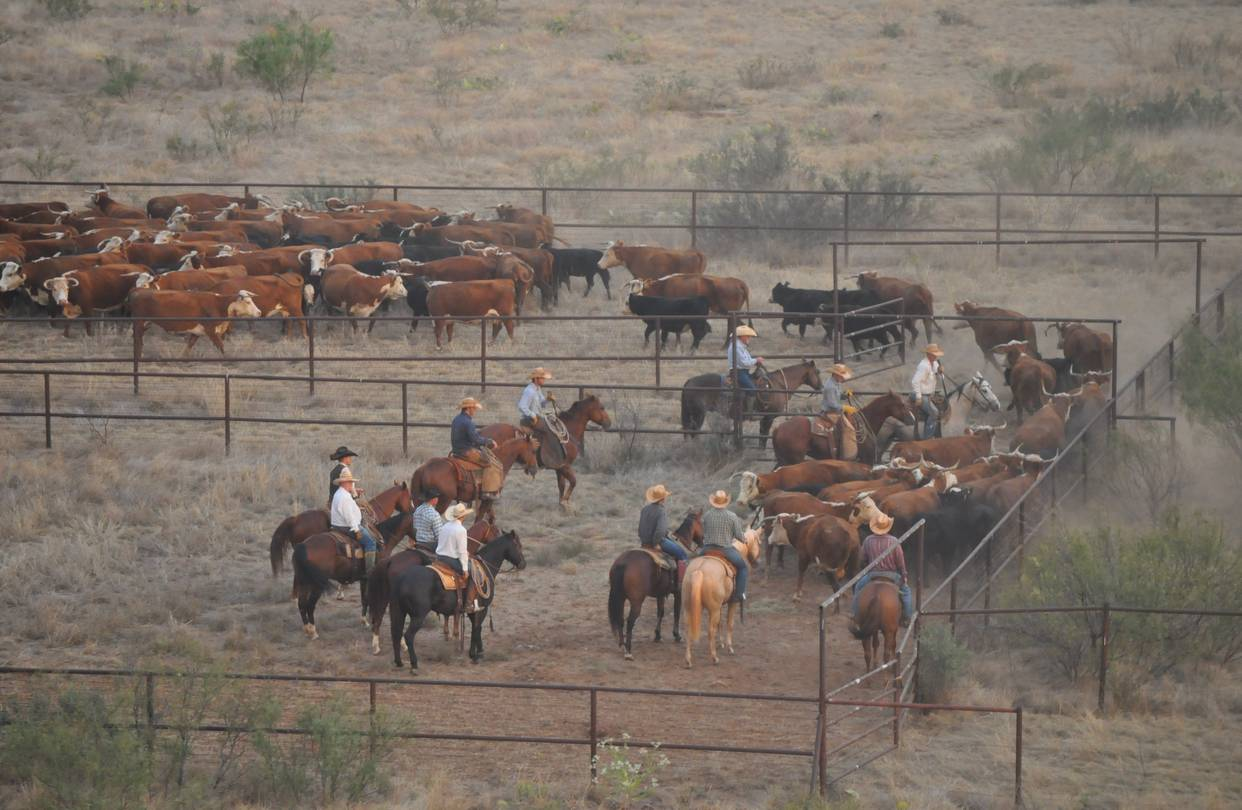Ever stepped onto a vista so large it seemed to never end? Welcome to the legendary Waggoner Ranch, where stories of cattle drives, oil wells, and family fortunes echo across 800 square miles. It’s more than just land; it’s a piece of Texas history.
The ranch has seen it all – from humble beginnings in open range cattle herding to discovering rich oil fields beneath its soil. Every blade of grass holds tales worth telling. Whether you’re drawn by the allure of historic cowboy culture or intrigued by economic shifts spurred by black gold discovery, this place won’t disappoint.
We’ll guide you on a journey across sweeping pastures and plains dotted with mesquite, meeting folks who’ve left their mark on this legendary estate over the years. You’ll encounter cowboys like Buster Wharton, visionaries such as William Thomas Waggoner, and today’s big shots.
The Rich History of Waggoner Ranch
Waggoner Ranch, sprawling over 510,527 acres, total acreage single fence or contiguous, and spanning six Texas counties, holds a rich history as fascinating as its size. Waggoner ranch is located a few miles South of Vernon Texas. The story begins with Dan Waggoner.
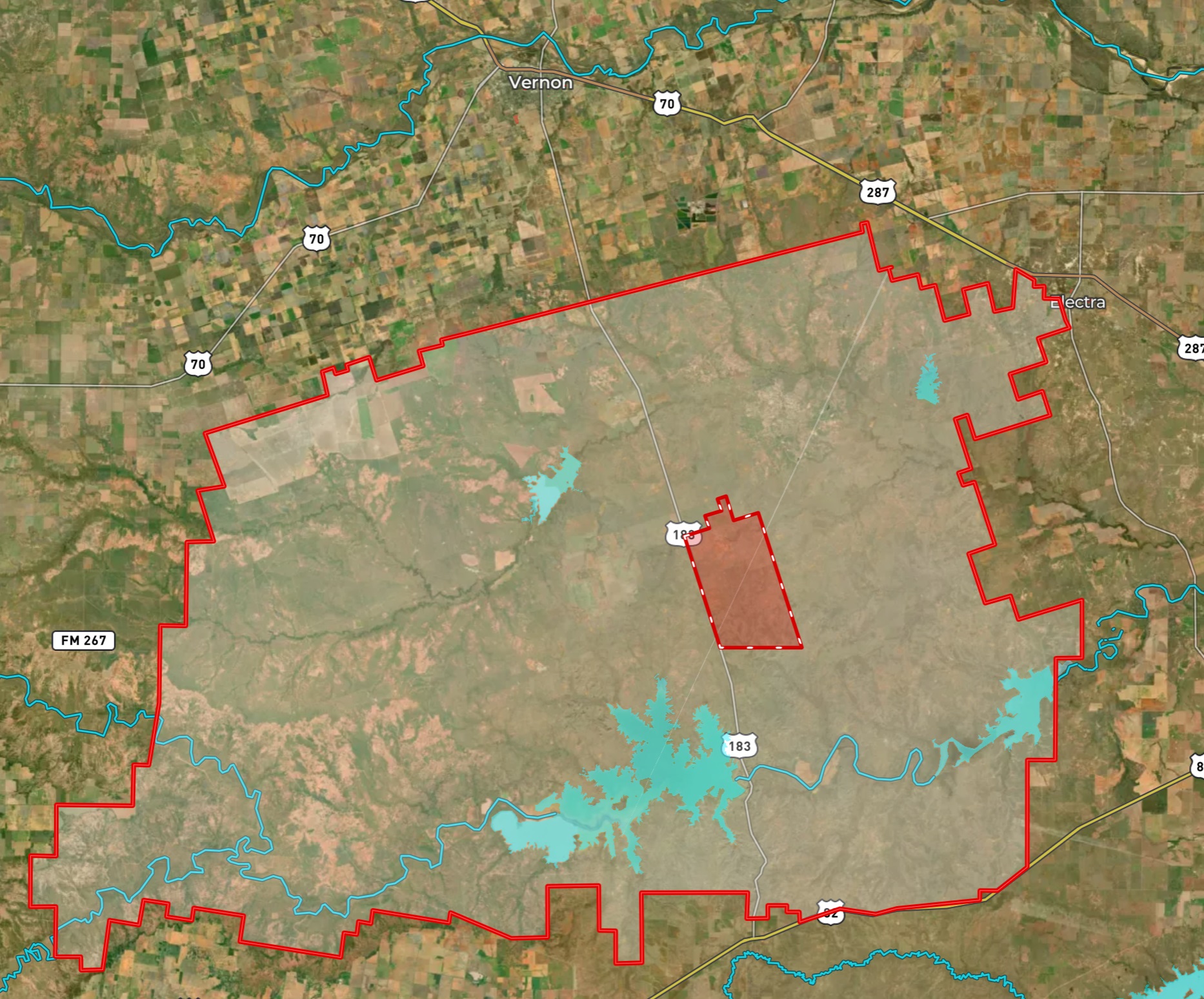
The Founding and Development of the Ranch
In the mid-1800s, Dan Waggoner, alongside his fifteen-year-old black slave trailed their herd from Wise County to Wichita River’s lush pastures. That was the birth of what we now know as the legendary Waggoner ranch.
Fast forward to years later; under wise management by Tom Waggoner – son William Thomas’ efforts transformed it into an empire extending over 800 square miles across Clay County and five other counties. Their cattle brand “Three D,” became synonymous with quality in ranch work circles nationwide.

Notable Events in Ranch History
Poco Bueno’s arrival at this historic Waggoner estate brought a shift towards breeding cutting horses for competitive events. This famed horse had white face markings – hence called White Face – becoming one signature trait among many ranch cowboys who rode him while working on oil fields or polo fields alike.
Ranch life wasn’t all smooth sailing though; family fortune took hits due to several disputes within the family itself that ended up reaching district court levels even leading up till Supreme Court. However these legal tussles did not deter generations like Electra Biggs or Buster Wharton from making significant contributions towards maintaining their beloved home land intact against odds.
The Breathtaking Landscape and Wildlife of Waggoner Ranch
The Diverse Landscapes of the Ranch
Stretching across 800 square miles, the vast expanse of Waggoner Ranch showcases a diverse array of landscapes. From dense mesquite groves to open pastures that seem endless, it’s a testament to nature’s beauty.
You’ll find yourself captivated by rivers winding their way through the ranch, carving out deep valleys over centuries. Catlett Creek is one such example – its sparkling waters are a lifeline for both flora and fauna in this rugged landscape.
Moving eastwards on the ranch takes you from fertile riverbanks to semi-arid plains where hardy grasses sway under Texas’ azure skies. A sight like no other.
The Abundant Wildlife on the Property
A trip around Waggoner wouldn’t be complete without appreciating its rich biodiversity. The sprawling property serves as home to numerous wildlife species.
Ranches aren’t just about cattle; they’re ecosystems teeming with life. Deer can often be spotted grazing near creeks while geese fly overhead in perfect V formations. On your exploration, don’t miss watching these majestic creatures up close but remember not to disturb them.
Beyond this serene surface lies another layer worth mentioning – hidden among bushes or perched high above trees are rare bird species making waggoner their abode. Red River Valley Museum has an impressive collection highlighting local avian diversity which will give you more insights into these feathered inhabitants. Statistic 6: About 7% of North American bird species have been recorded here, making it a paradise for birdwatchers.
As you move through the open range, watch out for burrowing critters and small mammals darting across your path. It’s an exciting experience to see this dynamic ecosystem in action.
The Waggoner Ranch – A Microcosm of Texan Biodiversity
Imagine a spot where rivers cross plains, and animals flourish alongside human hustle. That’s the Waggoner Ranch – a perfect snapshot of Texas’ rich biodiversity.
Key Takeaway:
Dive into the vast 800 square miles of Waggoner Ranch. It’s a treasure trove of diverse landscapes and wildlife galore. Picture this: rivers winding through deep valleys, semi-arid plains beneath wide-open Texas skies. And it’s not just cattle country – we’re talking an ecosystem teeming with life. Imagine deer nibbling by creeks, geese flying overhead, and even some rare creatures.
The Oil Legacy of Waggoner Ranch
When you think about the Waggoner Ranch, it’s impossible not to consider its rich oil history. A significant part of this ranch’s value comes from the wealth buried deep beneath its soil – mineral rights that were discovered back in 1902.
Oil wells sprung up across the ranch, transforming a cattle empire into an energy powerhouse. The first well was named ‘Lake Wichita,’ after a nearby water body and signaled the start of an era marked by booming oil production.
Economic Impact of Oil Production at Waggoner Ranch
The economic impact has been staggering. With over twelve hundred of productive wells spread over several square miles, revenues skyrocketed as black gold flowed out from under the red dirt.
- In terms like economic output – imagine generating enough cash flow to buy your favorite sports team… twice.
- In job creation – picture employing every resident in a small town; giving them meaningful work while pumping dollars into local economies.
- This might sound like we’re spinning tall tales here but these are genuine figures reflecting how immense an influence this oil legacy had on local communities around North Texas.
- Will Rogers Memorial Coliseum in Fort Worth, a city greatly influenced by the oil industry, stands as testament to this economic boom.
- Check this article out for more information on the oil production via Forbes.
The Ranch’s mineral rights have been central to its legacy. The mineral rights of the Waggoner Estate have been an essential factor in forming the area’s economy and culture.
Mineral Rights: The Heart of Waggoner Estate Value
So, you’re probably wondering, “What exactly are these mineral rights?” Well, they basically let you legally extract oil, gas, and other minerals out of the ground. Here is a great article if you want to know more on mineral rights – LINK
Key Takeaway:
Discussing Waggoner Ranch, it’s impossible to overlook its oil heritage. The mineral rights unearthed in 1902 transformed this simple cattle ranch into an energy powerhouse. Imagine the economic punch – like owning your top sports team twice or even funding a whole town. This fortune didn’t just inflate the Ranch’s worth; it also molded its identity.
The Modern Era – Stan Kroenke’s Acquisition
In 2016, the legendary Waggoner Ranch was purchased by none other than billionaire businessman Stan Kroenke. The ranch sold for an estimated $725,000,000. Known for his real estate and sports empire, he became one of the largest landowners in America with this acquisition of over 1,500,000 acres.
Many potential buyers had their eyes on this Texas gem. But it was Kroenke who walked away as the new owner. His purchase marked a significant shift from over a century of family ownership to corporate management.
Kroenke’s love for ranches isn’t newfound. He owns several others across North America. However, buying Waggoner wasn’t just about adding more acres to his portfolio; it came with an illustrious history and rich legacy too.
With this change in ownership, there were inevitable alterations in operations as well. One major difference being that under previous management much of the ranch work like cattle herding or oil field maintenance was done by cowboys living on-site at Waggoner Ranch – creating an intimate community deeply rooted in tradition and shared experience. Stan Kroenke does not desire to have the ranch divided.

The Future Plans Under New Ownership
What did Stan have planned for such historic property? Despite changes expected with any transition, his intent is clear: preserve its heritage while propelling into modernity.
This meant balancing traditional practices associated with running large-scale cattle operations alongside implementing cutting-edge technology where possible — all without compromising the authenticity unique to Waggoner Estate’s identity.
Maintaining The Rich Legacy
Kroenke understands value lies not only within tangible assets but also intangible ones—like reputation, heritage and legacy. He’s shown commitment to upholding the rich history of Waggoner Ranch while steering it towards a promising future.
His dedication can be seen in continued ranch activities like maintaining polo fields for training exceptional polo ponies – an activity Waggoner family were passionate about – thus preserving their sporting legacy as well.
Basically, Kroenke’s purchase is the start of a fresh page for this age-old ranch. It’s all about blending time-honored traditions with today’s trends—opening up thrilling chances but also honoring its rich history.
Key Takeaway:
Stan Kroenke, a billionaire businessman, didn’t merely purchase the iconic Waggoner Ranch in 2016 – he became part of its storied legacy. Transitioning from family-held to corporate-run, there were inevitable changes under his leadership. But what remained constant was Kroenke’s dedication to preserving the ranch’s rich heritage while steering it confidently into the future.
The Role of Waggoner Ranch in the Cattle Industry
Waggoner Ranch has long played a crucial role in shaping the cattle industry. With operations spanning across vast square miles, it has been instrumental in setting standards for ranch work and cattle rearing.
Ranch Cowboys and Mother Cows: The Backbone of Operations
The hardworking Waggoner ranch cowboys are pivotal to this successful operation. They have honed their skills over generations, managing herds across wide open ranges under challenging conditions. It’s not just about maintaining numbers but ensuring each animal is healthy. The Waggoner Cowboy has a full time job running on average of 11,000 to 14,000 mother cows annually.
Breeding quality mother cows have also contributed significantly to Waggoner’s success story. Their superior genetics resulted in sturdy calves that can withstand harsh weather while providing excellent beef quality – an attribute greatly valued by consumers and meat processors alike.
Leadership on Open Range Management Practices
Waggoner Ranch isn’t merely recognized for its sheer size or number of heads; it’s celebrated as a leader when it comes to sustainable management practices on the open range.
This forward-thinking approach includes responsible grazing patterns, effective water usage, soil conservation methods, all aimed at preserving ecosystems whilst maximizing productivity. Learn more here.
Influence on Breeds & Rearing Techniques
Cattle breeders far and wide recognize the influence Waggoner had over selecting breeds best suited for local conditions. In fact, Poco Bueno, a cutting horse from Waggoner stables became legendary within equine circles. Find out why.
Their tried and tested techniques have become benchmarks for others in the industry. From early disease detection to optimal feeding regimes, these methods ensure animal welfare while enhancing meat quality.
Cattle Industry: The Way Forward
Waggoner Ranch is at the forefront of creating a sustainable cattle industry, and their plans for the future are outlined here. Read about their plans here.
We need to keep up the genetic variety in our herds, put money into tech for improved herd management, and work on development.
Key Takeaway:
Waggoner Ranch’s significant impact on the cattle industry comes from its large-scale operations, skilled cowboys, quality breeding practices and leadership in sustainable ranch management. Its influence extends to optimal breed selection and rearing techniques that prioritize animal welfare and meat quality. As we move towards more sustainable practices, Waggoner continues to shape the future of the industry.
Comparing Waggoner Ranch with Other Renowned Ranches
Let’s dive into the world of famous ranches. Waggoner Ranch, King Ranch, and Santa Rosa are some of the biggest names in this field.
The Legendary Waggoner and King: A Comparison
The King Ranch, located in South Texas, is a stark contrast to the sprawling open range landscapes found on the historic Waggoner. Both ranches have unique features that set them apart from other estates. The King specializes more in cutting horse breeding while wagons were rolled out at big pasture expanses by early pioneers like Dan Waggoner on his legendary property.
In terms of size, both properties span hundreds of square miles – but it’s not all about acreage when comparing these two titans. There’s also their historical significance within Texas’ heritage to consider because each has played its part in shaping regional culture over centuries. The King Ranch spans over 800,000 acres, but it is not contiguous like the Wagoneer Ranch.
Santa Rosa – An Exemplar from California
Moving westward across state lines lands us at another noteworthy contender – Santa Rosa. While smaller than our Texan examples above (only 5000 acres), what sets Santa Rosa apart is its dedicated focus on polo ponies development which contrasts sharply with large-scale cattle operations run by folks back at Fort Worth or Wise County district courts managing legal disputes for land ownership amongst largest landowners like those inheriting family fortune after William Thomas “Tom” passed away leaving behind oil fields besides thousands heads livestock grazing under watchful eyes hard-working ranch cowboys who ensure they’re well-fed healthy even amidst extreme weather conditions experienced throughout year down south near Red River banks along Wichita Falls boundary separating Clay Wilbarger Wichita counties.

The Santa Rosa is famous for its polo fields and exquisite training facilities. This sets it apart from the Waggoner, which was primarily a cattle ranch with an impressive oil legacy.
Appreciating Ranch Diversity
All across America, ranches vary in size, how they run things, and their past. Each one’s unique charm and tale adds to our grasp of country living in various regions.
Key Takeaway:
Explore the unique tapestry of America’s renowned ranches, each boasting a distinctive narrative and specialty. Contrast Waggoner Ranch’s sprawling vistas and oil heritage with King Ranch’s esteemed horse breeding in Texas, or Santa Rosa’s polo pony cultivation in California. Keep in mind, it isn’t just about scale – every ranch contributes its own unique touch to our perception of rural life.
The Cultural Impact of Waggoner Family
Known for their vast wealth and influence, the Waggoner family has left a significant cultural impact on Texas and beyond. But it’s not just about oil fields or open range cattle operations. They’ve made substantial contributions to art, philanthropy, and more.
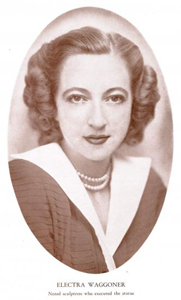
The Artistic Contributions of Electra Waggoner Biggs
Among the most noteworthy contributors is Electra Waggoner Biggs. Known as one of the heirs to the massive family fortune, her name goes beyond that. She was an accomplished artist who carved out her own place in history with iconic sculptures.
You might have seen some of them without realizing their origin – they are landmarks unto themselves. One such piece graces Will Rogers Memorial Coliseum, a testament to both Will Rogers’ legacy and Electra’s artistic prowess.
Beyond physical works, she also contributed significantly towards encouraging other artists in Fort Worth through various charitable initiatives supported by her sizable estate after she passed away.
This city is now celebrated for its colorful arts environment, all thanks to the generous programs funded by Electra’s estate after her passing. The story behind this contribution makes quite an interesting read.
A Legacy Beyond Land Ownership
Moving past individual members like Electra Biggs brings us back to considering the broader picture: How did owning half-a-million acres translate into cultural impact?
To understand this fully we need look no further than cutting horse competitions – where cowboys showcase their skills on horseback, a tradition rooted in the Waggoner Ranch.
The ranch has been known for its cutting horses. They even bred Poco Bueno, one of the most famous cutting horses ever. His influence can be seen in competitions to this day and adds to how the Waggoners have shaped Texas culture over generations.
But it’s not only about molding the culture within Texas. The
Key Takeaway:
The Waggoner family’s legacy is far more than oil and cattle; it’s a rich tapestry of art, philanthropy, and cultural influence. Electra Waggoner Biggs carved her mark in history with iconic sculptures while their contributions to cutting horse competitions shape Texas culture even today.
Conclusion
So, you’ve journeyed through the vast expanse of the Waggoner Ranch. You’ve discovered its rich history – from humble beginnings to becoming a symbol of Texas heritage.
You’ve explored diverse landscapes teeming with wildlife and marveled at their beauty. From open pastures to mesquite-covered plains, it’s been quite a ride!
You delved into the oil legacy that brought prosperity and conflict in equal measure. Oil wells beneath this land changed not just its value but also its destiny.
We walked you through Stan Kroenke’s acquisition, pondering on what future holds for this legendary estate under new ownership.
The role Waggoner Ranch has played in shaping today’s cattle industry is undeniable. As are Electra Biggs’ artistic contributions adding another dimension to family legacy.
